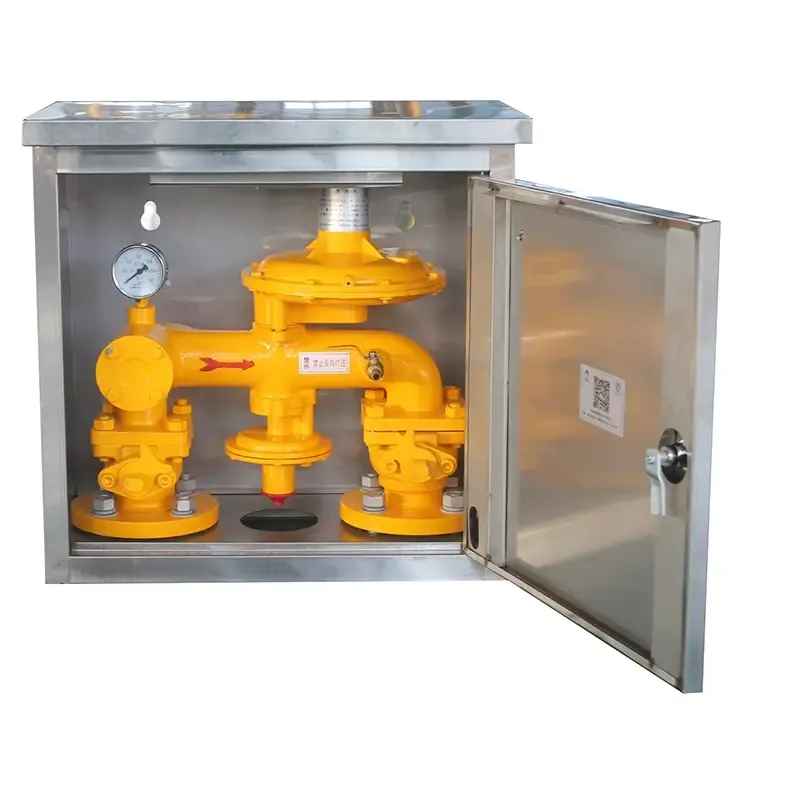
Sep . 14, 2024 14:51
Back to list
gas pressure reducing station
Gas Pressure Reducing Station An Overview
Gas pressure reducing stations (PRMs) play a critical role in the distribution and management of natural gas systems. These facilities are essential for ensuring that natural gas is delivered safely and at the appropriate pressure to end-users, including residential, commercial, and industrial customers. This article will provide an overview of gas pressure reducing stations, their functions, components, and significance in the gas supply chain.
Function of Gas Pressure Reducing Stations
The primary function of a gas pressure reducing station is to decrease the high pressure of natural gas coming from transmission lines to a lower pressure suitable for distribution. High-pressure gas is needed for transportation over long distances, but it cannot be delivered directly to consumers due to safety concerns and equipment limitations. PRMs regulate the pressure and flow of gas, ensuring that it meets the required specifications for safe use.
Components of a Gas Pressure Reducing Station
A typical gas pressure reducing station consists of several key components
1. Pressure Regulators These are the heart of the station. They automatically adjust the flow of gas and maintain it at a predetermined lower pressure. If the pressure increases beyond the desired level, the regulator will restrict the flow, maintaining safety and efficiency.
2. Safety Valves Also known as relief valves, these components prevent over-pressurization by automatically venting gas when pressure exceeds safe operating limits. This is crucial for protecting both the station and the downstream infrastructure.
gas pressure reducing station

3. Flow Meters These devices measure the volume of gas passing through the station. Accurate flow measurement is essential for billing and monitoring purposes.
4. Filters Gas often contains impurities that could interfere with the operation of equipment and affect combustion. Filters are used to remove any particulate matter before the gas enters the distribution network.
5. Control Systems Advanced PRMs are equipped with automated control systems that monitor pressure levels and flow rates, enabling real-time adjustments and ensuring optimal operation. These systems can send alerts and data to centralized control centers for better oversight.
Significance in the Gas Supply Chain
Gas pressure reducing stations are vital for the efficiency and safety of gas distribution networks. By ensuring that gas is delivered at the correct pressure, these stations help prevent accidents, equipment damage, and service interruptions. Additionally, they enable the integration of renewable energy sources and other fluctuating supply types into the natural gas grid.
Furthermore, as energy demands rise and the push for cleaner energy sources continues, the role of PRMs is becoming increasingly important. They are not only essential for traditional gas distribution but also for facilitating the transition to more sustainable energy solutions, including biogas and hydrogen.
Conclusion
In summary, gas pressure reducing stations are indispensable components of natural gas distribution systems. Through their sophisticated mechanisms and safety features, they ensure that natural gas is delivered efficiently, safely, and at the right pressure to consumers. As the gas industry evolves, the significance of these stations will only continue to grow, adapting to new technologies and energy needs. Investing in modern PRMs is crucial for enhancing the resilience and sustainability of gas infrastructure worldwide.
Next:
Latest news
-
Safety Valve Spring-Loaded Design Overpressure ProtectionNewsJul.25,2025
-
Precision Voltage Regulator AC5 Accuracy Grade PerformanceNewsJul.25,2025
-
Natural Gas Pressure Regulating Skid Industrial Pipeline ApplicationsNewsJul.25,2025
-
Natural Gas Filter Stainless Steel Mesh Element DesignNewsJul.25,2025
-
Gas Pressure Regulator Valve Direct-Acting Spring-Loaded DesignNewsJul.25,2025
-
Decompression Equipment Multi-Stage Heat Exchange System DesignNewsJul.25,2025

